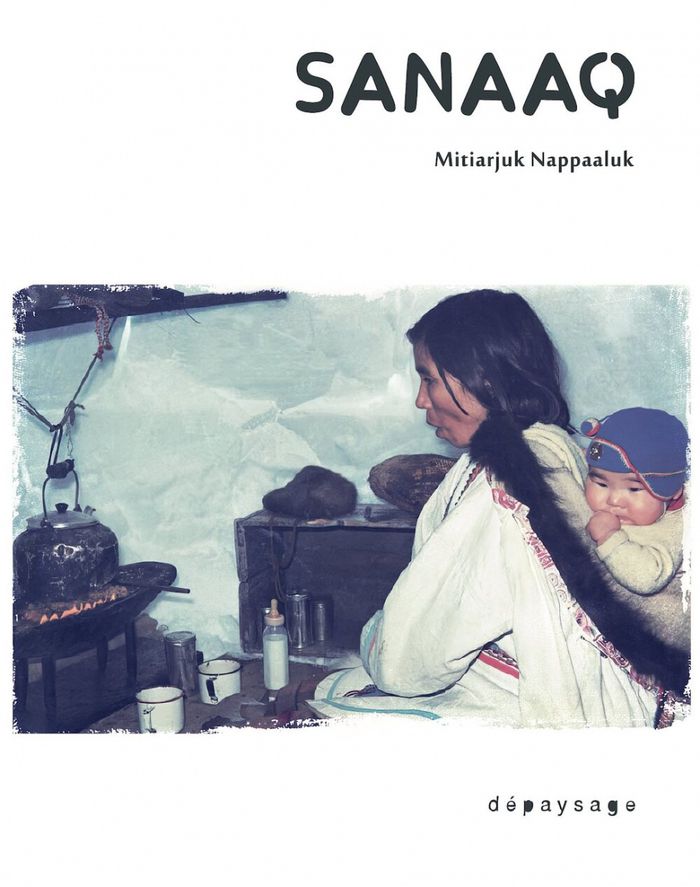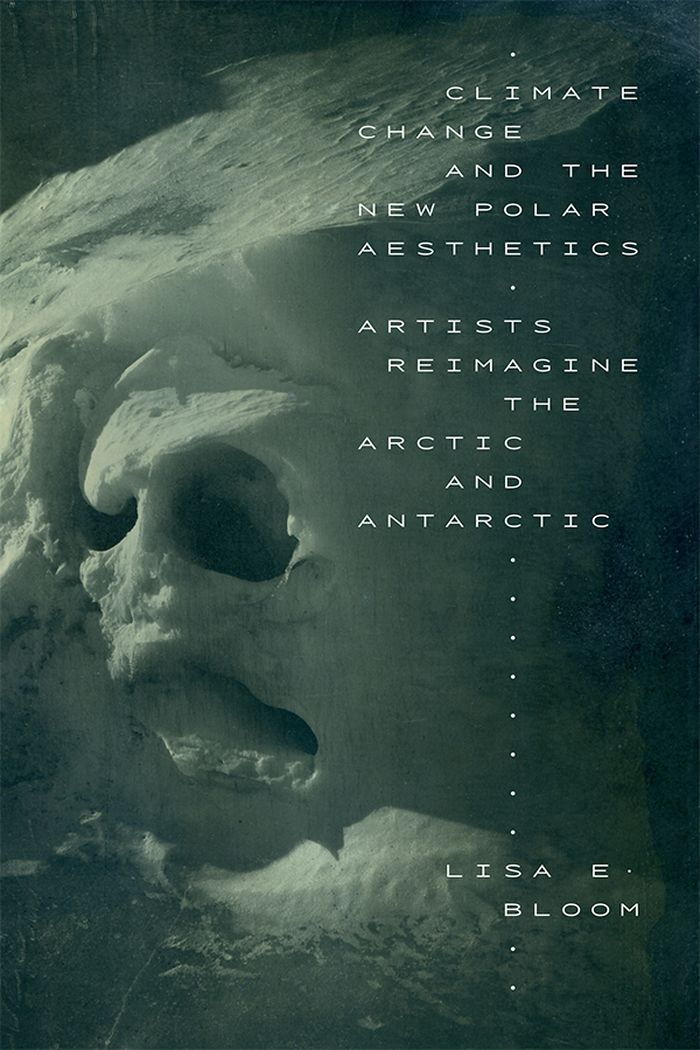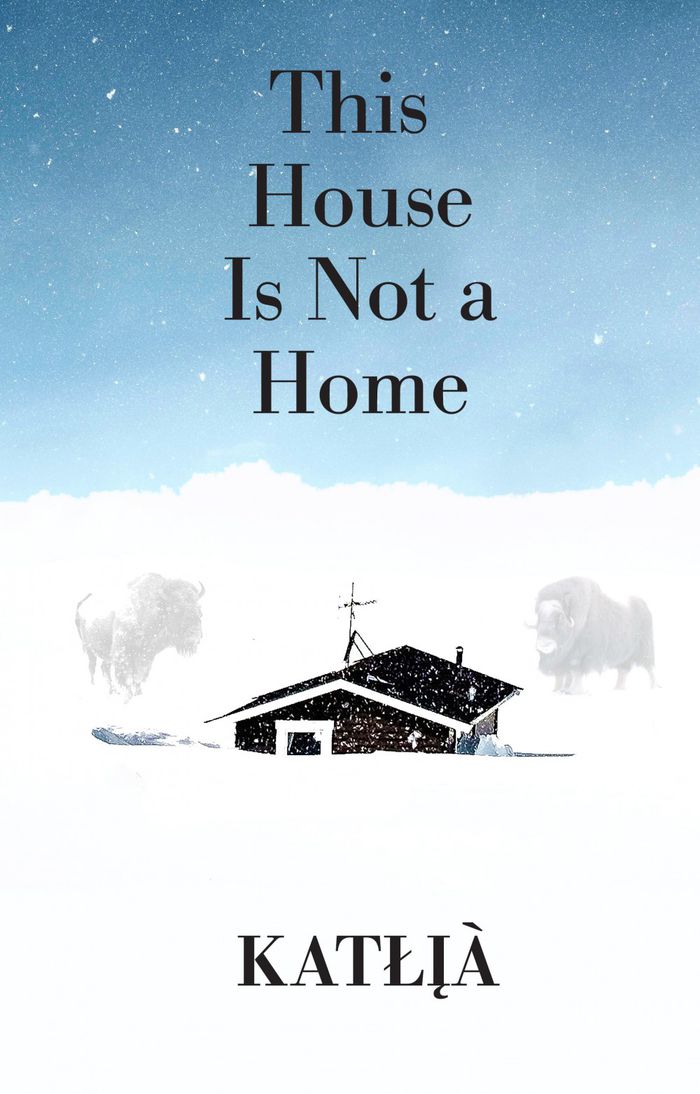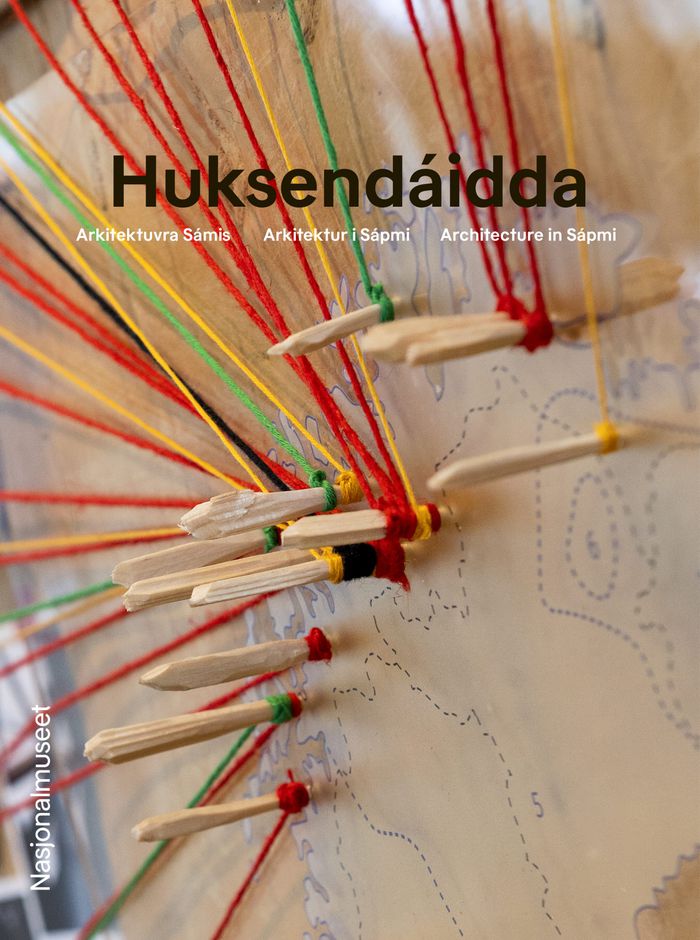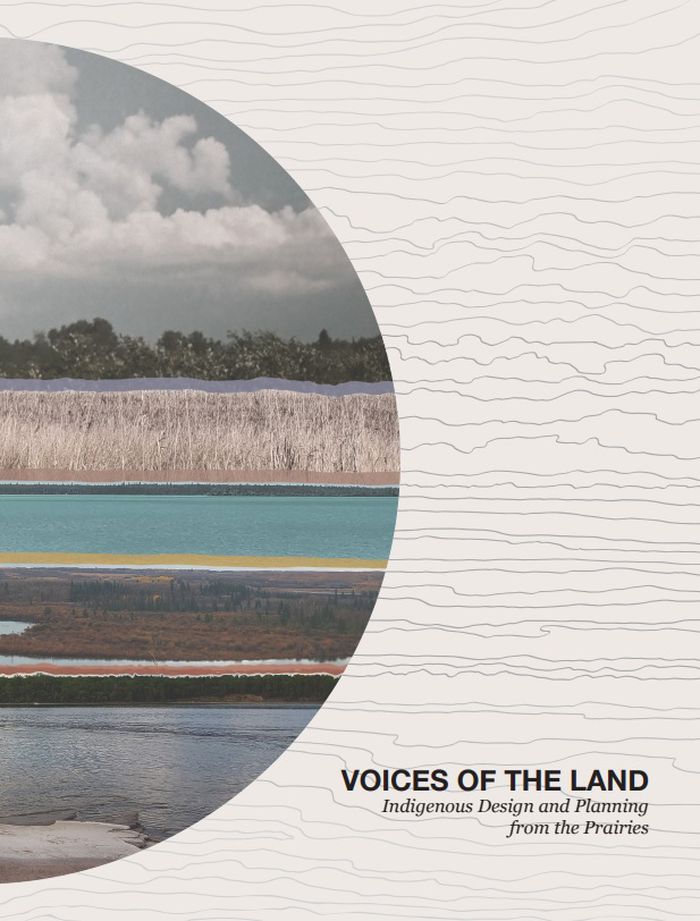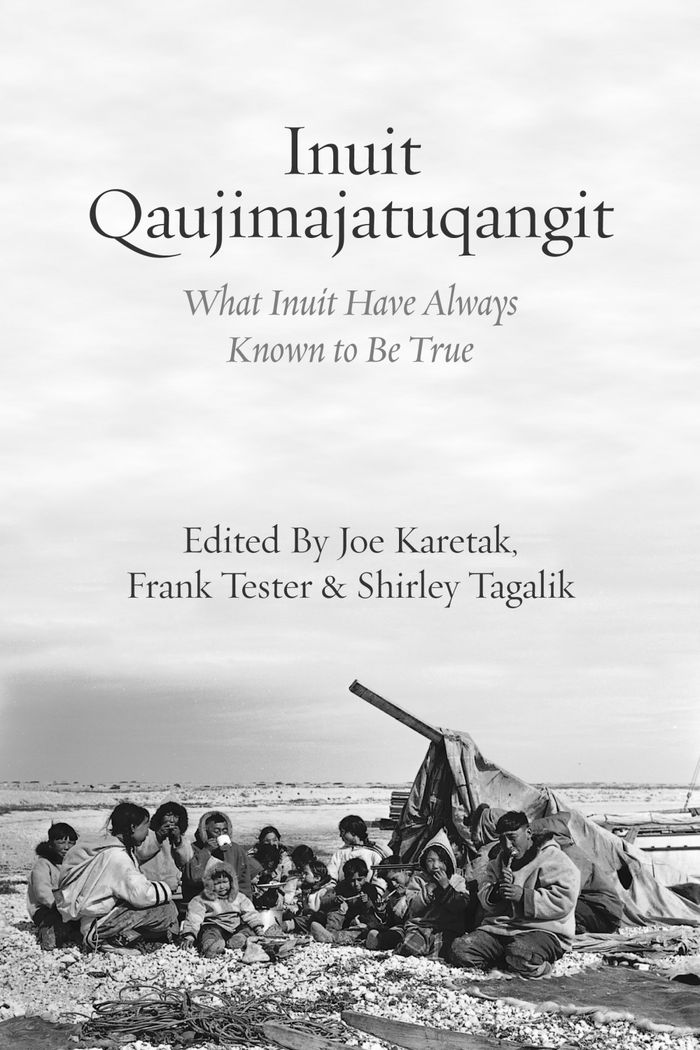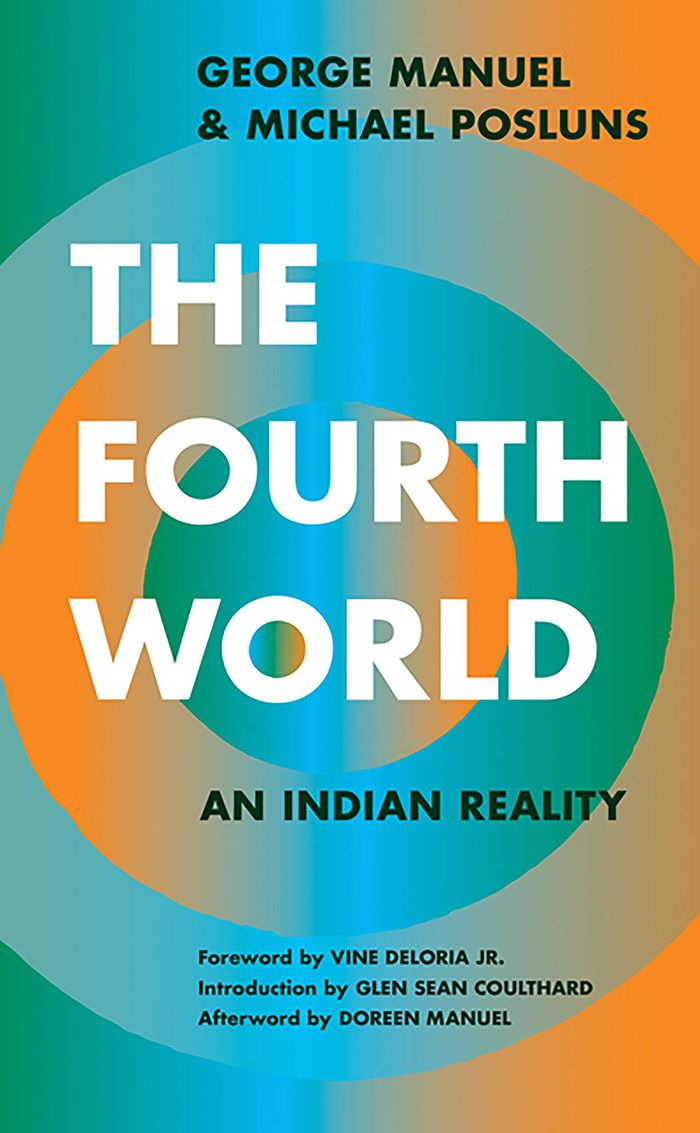$34.95
(available to order)
Summary:
Un roman atypique. Sur la vie. Au jour le jour. Les joies et les peines d’une petite communauté inuit du nord du Canada. On y apprend à construire en toute hâte un iglou, à repérer la glace traîtresse, à chasser l’ours avec des chiens de traîneau, à préparer de la viande séchée de phoque et à interpréter les signes de la présence de Tuurngaq, un esprit auxiliaire de(...)
Sanaaq
Actions:
Price:
$34.95
(available to order)
Summary:
Un roman atypique. Sur la vie. Au jour le jour. Les joies et les peines d’une petite communauté inuit du nord du Canada. On y apprend à construire en toute hâte un iglou, à repérer la glace traîtresse, à chasser l’ours avec des chiens de traîneau, à préparer de la viande séchée de phoque et à interpréter les signes de la présence de Tuurngaq, un esprit auxiliaire de chamane que n’apprécient guère les premiers missionnaires chrétiens. Surtout, une expérience rare est ici offerte, celle de voir le monde singulier des Inuit avec les yeux de l’héroïne, Sanaaq. Une femme qui, à l’image de Mitiarjuk Nappaaluk, l’auteure du roman, écrivaine analphabète et docteure sans cursus scolaire, ne s’en laisse jamais conter…
indigenous
$36.95
(available to order)
Summary:
In this volume, Lisa E. Bloom considers the ways artists, filmmakers, and activists engaged with the Arctic and Antarctic to represent our current environmental crises and reconstruct public understandings of them. Bloom engages feminist, Black, Indigenous, and non-Western perspectives to address the exigencies of the experience of the Anthropocene and its attendant(...)
Climate change and the new polar aesthetics: Artists reimagine the Arctic and Antarctic
Actions:
Price:
$36.95
(available to order)
Summary:
In this volume, Lisa E. Bloom considers the ways artists, filmmakers, and activists engaged with the Arctic and Antarctic to represent our current environmental crises and reconstruct public understandings of them. Bloom engages feminist, Black, Indigenous, and non-Western perspectives to address the exigencies of the experience of the Anthropocene and its attendant ecosystem failures, rising sea levels, and climate-led migrations. As opposed to mainstream media depictions of climate change that feature apocalyptic spectacles of distant melting ice and desperate polar bears, artists such as Katja Aglert, Subhankar Banerjee, Joyce Campbell, Judit Hersko, Roni Horn, Isaac Julien, Zacharias Kunuk, Connie Samaras, and activist art collectives take a more complex poetic and political approach. Bloom’s examination and contextualization of new polar aesthetics makes environmental degradation more legible while demonstrating that our own political agency is central to imagining and constructing a better world.
indigenous
This house is not a home
$24.00
(available to order)
Summary:
After a hunting trip one fall, a family in the far reaches of so-called Canada’s north return to nothing but an empty space where their home once stood. Finding themselves suddenly homeless, they have no choice but to assimilate into settler-colonial society in a mining town that has encroached on their freedom.This intergenerational coming-of-age novel follows Ko`, a(...)
This house is not a home
Actions:
Price:
$24.00
(available to order)
Summary:
After a hunting trip one fall, a family in the far reaches of so-called Canada’s north return to nothing but an empty space where their home once stood. Finding themselves suddenly homeless, they have no choice but to assimilate into settler-colonial society in a mining town that has encroached on their freedom.This intergenerational coming-of-age novel follows Ko`, a Dene man who grew up entirely on the land before being taken to residential school. When he finally returns home, he struggles to connect with his family: his younger brother whom he has never met, his mother because he has lost his language, and an absent father whose disappearance he is too afraid to question. The third book from acclaimed Dene, Cree and Metis writer Katlià, this is a fictional story based on true events, presenting a clear trajectory of how settlers dispossessed Indigenous Peoples of their land — and how Indigenous communities, with dignity and resilience, continue to live and honour their culture, values, inherent knowledge systems, and Indigenous rights towards re-establishing sovereignty.
indigenous
books
Le musée du quai Branly
$62.95
(available to order)
Summary:
L’ouverture du musée du quai Branly est l’aboutissement d’un rêve déjà ancien : celui de Claude Lévi-Strauss d’abord, d’André Malraux ensuite et enfin celui né de la rencontre entre Jacques Chirac, passionné depuis toujours par les arts du bout du monde, et Jacques Kerchache, auteur du manifeste «Les chefs-d’œuvre du monde entier naissent libres et égaux en droit». De(...)
Architecture since 1900, Europe
October 2006, Paris
Le musée du quai Branly
Actions:
Price:
$62.95
(available to order)
Summary:
L’ouverture du musée du quai Branly est l’aboutissement d’un rêve déjà ancien : celui de Claude Lévi-Strauss d’abord, d’André Malraux ensuite et enfin celui né de la rencontre entre Jacques Chirac, passionné depuis toujours par les arts du bout du monde, et Jacques Kerchache, auteur du manifeste «Les chefs-d’œuvre du monde entier naissent libres et égaux en droit». De cette ferveur commune pour les arts non occidentaux est née l’idée de créer un lieu qui rende aux cultures minoritaires leur juste place dans les institutions muséales de la France. Dès 1995, le président de la République m’a demandé de conduire un groupe de réflexion sur ce futur musée. Le projet ne s’est pas fait en un jour, il a suscité des débats, traversé des tempêtes, rencontré des détracteurs, nourri des passions. L’accueil enthousiaste que le public réserve au musée du quai Branly depuis son ouverture est bien plus qu’une récompense, c’est la démonstration qu’une telle institution répond à une attente réelle et légitime et que ceux qui l’ont voulue avaient compris cette nécessité culturelle. Le projet architectural du musée du quai Branly est atypique. Il témoigne de la maturité du travail de Jean Nouvel. Répondant à des exigences spécifiques en matière d’image, d’identité, d’accessibilité et d’insertion urbaine, bénéficiant d’un site exceptionnel, à l’ombre de la tour Eiffel, il joue sur l’émotion, le dépaysement, la joie de la découverte. Le bâtiment, par son architecture novatrice, incarne parfaitement les ambitions qui étaient au cœur de ce grand projet : la tolérance, la reconnaissance et le respect des différences. Affirmation du refus d’une conception étriquée des savoirs et d’une hiérarchie des arts établie au détriment des productions artistiques des autres continents, il illustre l’engagement de la France voulu par Jacques Chirac en faveur de la diversité culturelle. C’est au contact des artistes, chercheurs et muséologues étrangers que se tisseront maintenant des liens durables avec la communauté scientifique et culturelle internationale. C’est aussi au contact des peuples autochtones que se forgera une appréhension plus juste de la manière de présenter et de faire vivre leurs patrimoines. Souhaitons que l’échange de ces regards et de ces questionnements nourrisse et enrichisse cette jeune et belle institution. Jacques Friedmann, Président d’honneur
books
October 2006, Paris
Architecture since 1900, Europe
$75.00
(available in store)
Summary:
Finding your way around Sami building culture and architecture can be a challenge, as the material is scattered and sometimes inaccessible. This book is intended as both an introduction and a guide to deepening one's knowledge of the subject - in North Sami, Norwegian and English. In October 2021, the National Museum opened an exhibition of architect and artist Joar(...)
Huksendaidda: Architecture in Sapmi
Actions:
Price:
$75.00
(available in store)
Summary:
Finding your way around Sami building culture and architecture can be a challenge, as the material is scattered and sometimes inaccessible. This book is intended as both an introduction and a guide to deepening one's knowledge of the subject - in North Sami, Norwegian and English. In October 2021, the National Museum opened an exhibition of architect and artist Joar Nango's nomadic architectural library Girjegumpi. During the opening weekend, the museum organized a seminar on Sami architecture, and the lectures from the seminar are the basis for the book. Here you can read more about Nango's work Girjegumpi, Sami building practices, the treatment of the Sami in the history of architecture in Norway, how reconstruction and Norwegianization went hand in hand, the phenomenon of kjempelávvu, and also get an overview of Sami architecture on the Norwegian side of Sápmi.
Indigenous architecture
$60.00
(available in store)
Summary:
In 1892 seventeen Haida artists were commissioned to carve a model of HlGaagilda Llnagaay (the village of Skidegate on Haida Gwaii, British Columbia) for the 1893 World’s Fair in Chicago. The Skidegate model, featuring twenty-nine large houses and forty-two poles, is the only known model village in North America carved by nineteenth-century Indigenous residents of the(...)
Skidegate House Models: From Haida Gwaii to the Chicago World's Fair and Beyond
Actions:
Price:
$60.00
(available in store)
Summary:
In 1892 seventeen Haida artists were commissioned to carve a model of HlGaagilda Llnagaay (the village of Skidegate on Haida Gwaii, British Columbia) for the 1893 World’s Fair in Chicago. The Skidegate model, featuring twenty-nine large houses and forty-two poles, is the only known model village in North America carved by nineteenth-century Indigenous residents of the village it portrayed. Based on over twenty years of collaborative research with the Skidegate Haida community, the book features vital cultural context. Robin K. Wright explores how Haida people represented their culture to the outside world at a time when they were suffering from devastating population loss due to introduced diseases and from ongoing attempts by the settler government to suppress their culture by making the potlatch illegal. While promoters of the Chicago World’s Fair used the village to celebrate the perceived “progress” of the dominant society, for Skidegate residents it provided a means to preserve their history and culture. After the exposition, many models were dispersed to the Field Museum of Natural History and other collections, but fourteen of the model houses have not yet been located. The book provides extensive archival information and photographs that contextualize the model village and might help locate the missing houses. Wright’s community-engaged research offers valuable insights into Northwest Coast art history.
Indigenous architecture
$25.00
(available to order)
Summary:
"Voices of the land: Indigenous design and planning from the prairies" produced by the Indigenous Design and Planning Students’ Association (IDPSA), of the Faculty of Architecture at the University of Manitoba. IDPSA was founded in Fall 2019, as a platform to host honest conversations around inclusion and representation. In an effort to broaden the lens of Indigenous(...)
Indigenous architecture
July 2021
Voices of the land : Indigenous design and planning from the prairies
Actions:
Price:
$25.00
(available to order)
Summary:
"Voices of the land: Indigenous design and planning from the prairies" produced by the Indigenous Design and Planning Students’ Association (IDPSA), of the Faculty of Architecture at the University of Manitoba. IDPSA was founded in Fall 2019, as a platform to host honest conversations around inclusion and representation. In an effort to broaden the lens of Indigenous design and planning, IDPSA actively seeks to incorporate Indigenous values within the design community through advocating for culturally informed initiatives, programs, and curriculum. This book features 16 Indigenous students, representing a range of nations across Turtle Island, and spanning all four departments (Architecture, Landscape Architecture, Interior Design, and City Planning) from the Faculty of Architecture. In it, you will read profiles of their members, faculty, and alumni, along with their artistic visions and designs. The intention with this publication is to ensure that these important conversations on inclusion and representation in design education continue throughout Turtle Island.
Indigenous architecture
$40.00
(available to order)
Summary:
This volume explores how Indigenous visual art and culture operate within and from a structural framework that is unique within the cultural milieu. Through a selection of contributions by Indigenous curators, artists, and scholars brings together perspectives that define curatorial practices, and at the same time postulates Indigenous sovereignty and self-determination(...)
May 2020
Becoming our future: Global indigenous curatorial practice
Actions:
Price:
$40.00
(available to order)
Summary:
This volume explores how Indigenous visual art and culture operate within and from a structural framework that is unique within the cultural milieu. Through a selection of contributions by Indigenous curators, artists, and scholars brings together perspectives that define curatorial practices, and at the same time postulates Indigenous sovereignty and self-determination within the three countries. These compelling essays begin to unearth the connections and historical moments that draw Indigenous curatorial practices together and the differences that set them apart.
$30.00
(available in store)
Summary:
Inuit Qaujimajatuqangit — meaning all the extensive knowledge and experience passed from generation to generation — is a collection of contributions by well-known and respected Inuit Elders. The book functions as a way of preserving important knowledge and tradition, contextualizing that knowledge within Canada’s colonial legacy and providing an Inuit perspective on how(...)
Inuit Qaujimajatuqangit: What Inuit have always known to be true
Actions:
Price:
$30.00
(available in store)
Summary:
Inuit Qaujimajatuqangit — meaning all the extensive knowledge and experience passed from generation to generation — is a collection of contributions by well-known and respected Inuit Elders. The book functions as a way of preserving important knowledge and tradition, contextualizing that knowledge within Canada’s colonial legacy and providing an Inuit perspective on how we relate to each other, to other living beings and the environment.
$34.99
(available to order)
Summary:
Originally published in 1974, this book is a critical work of Indigenous political activism that has long been out of print. George Manuel, a leader in the North American Indian movement at that time, with coauthor journalist Michael Posluns, presents a rich historical document that traces the struggle for Indigenous survival as a nation, a culture, and a reality. The(...)
The Fourth World: An Indian reality
Actions:
Price:
$34.99
(available to order)
Summary:
Originally published in 1974, this book is a critical work of Indigenous political activism that has long been out of print. George Manuel, a leader in the North American Indian movement at that time, with coauthor journalist Michael Posluns, presents a rich historical document that traces the struggle for Indigenous survival as a nation, a culture, and a reality. The authors shed light on alternatives for coexistence that would take place in the Fourth World—an alternative to the new world, the old world, and the Third World. Manuel was the first to develop this concept of the “fourth world” to describe the place occupied by Indigenous nations within colonial nation-states. Accompanied by a new introduction and afterword, this book is as poignant and provocative today as it was when first published.
